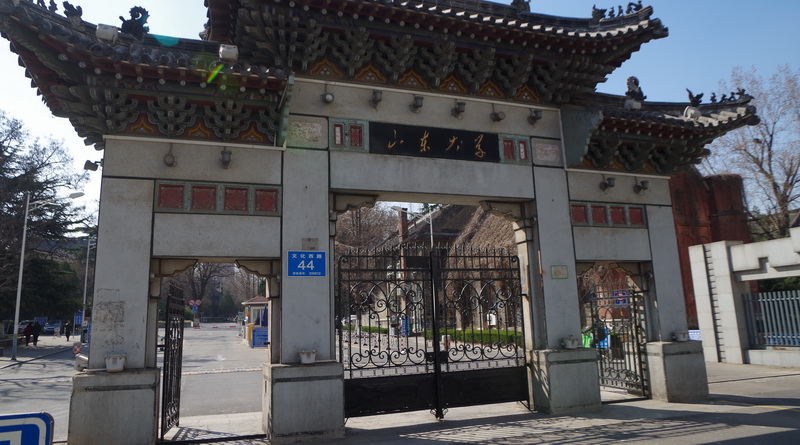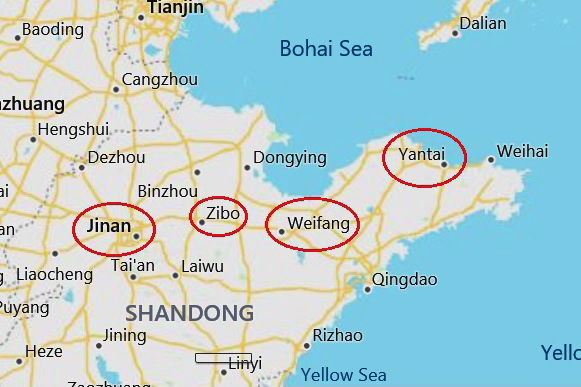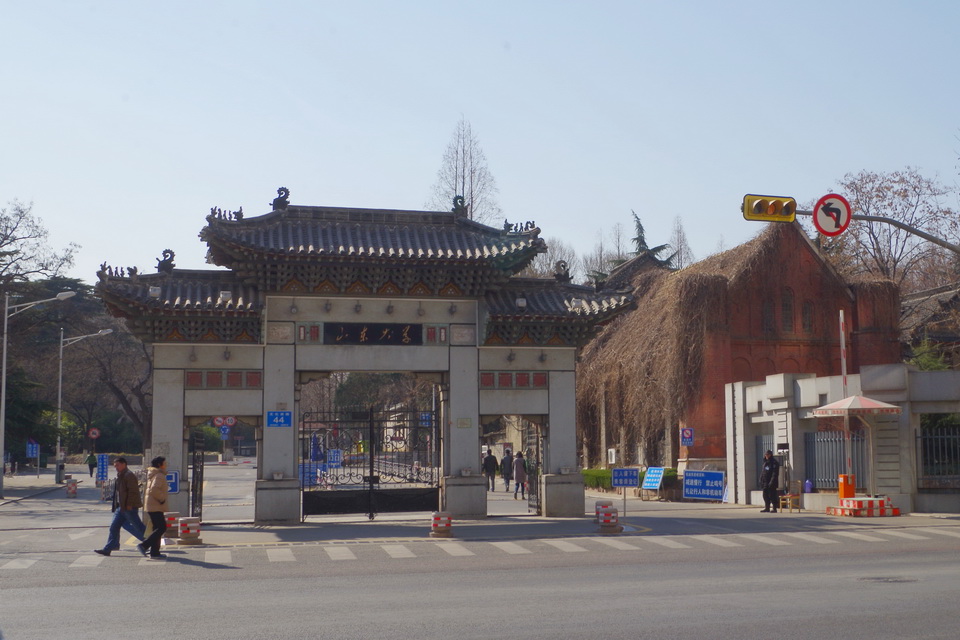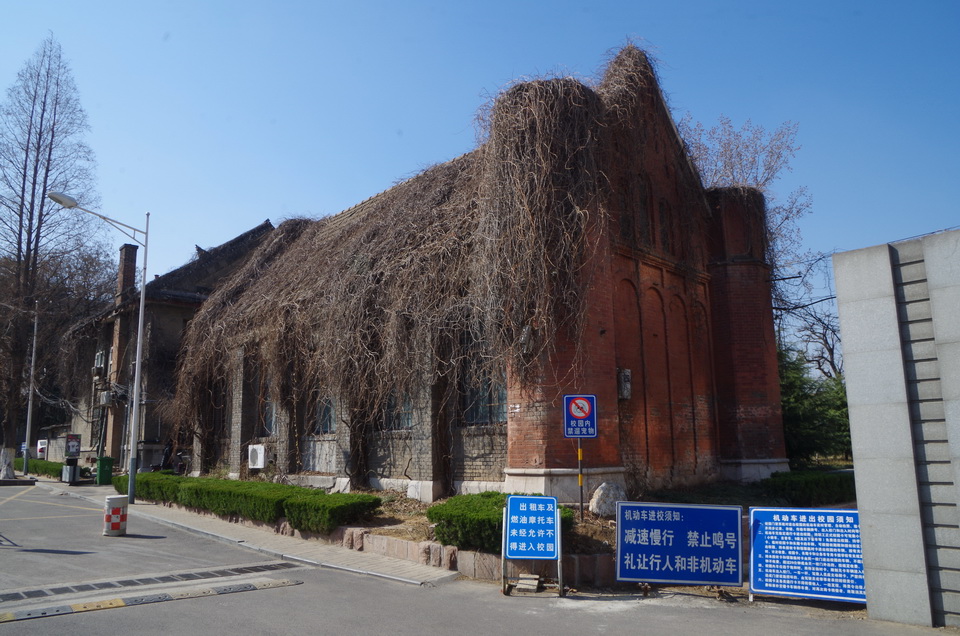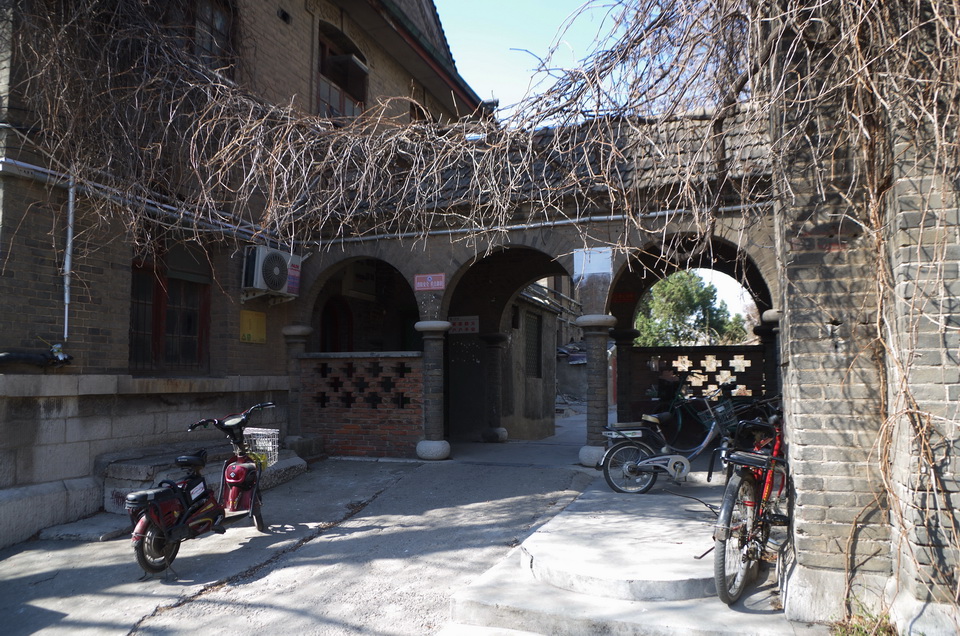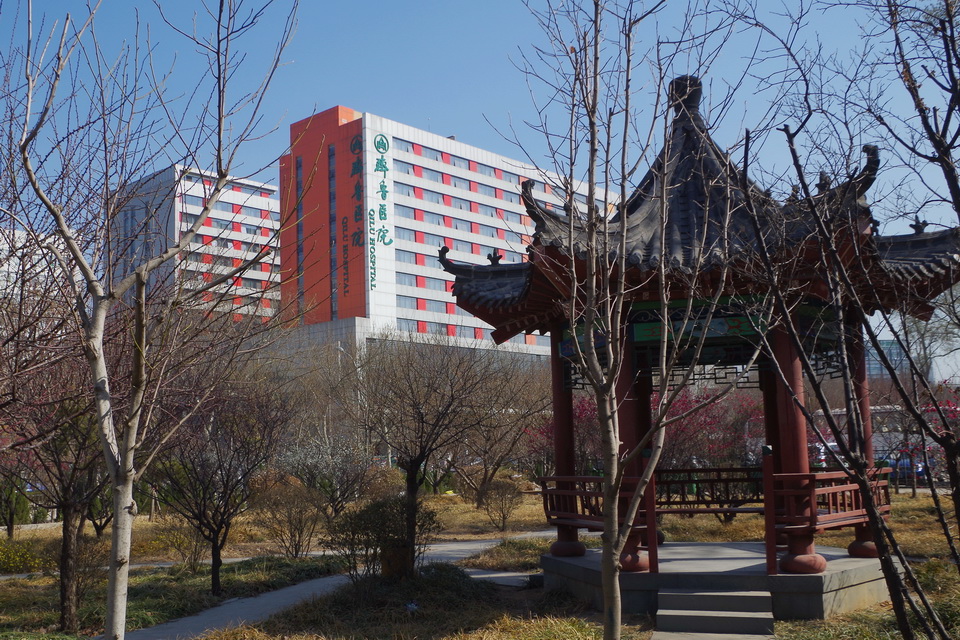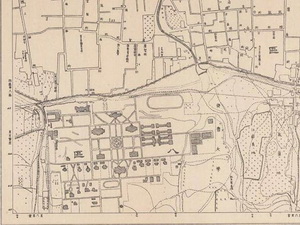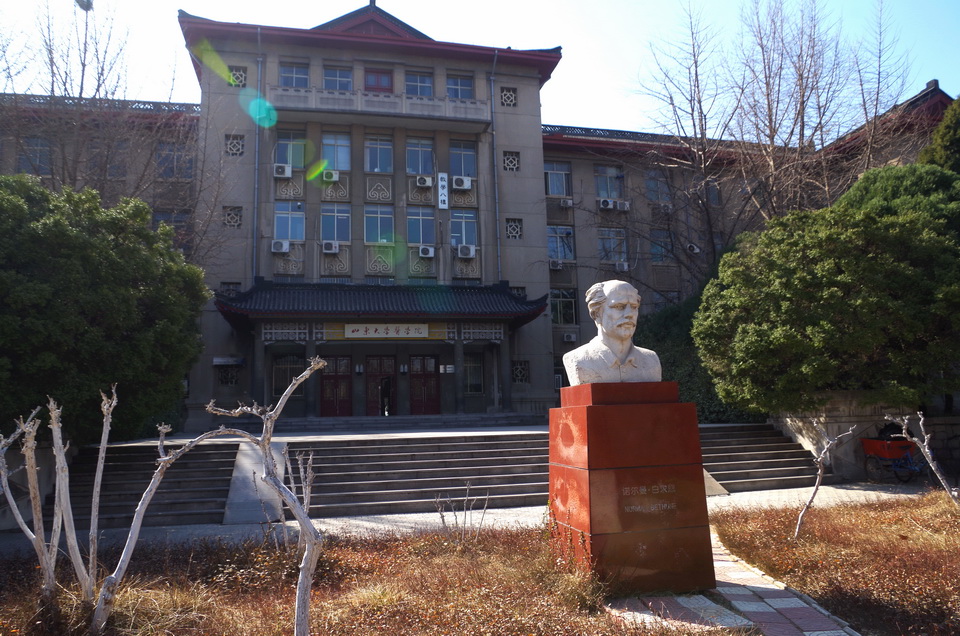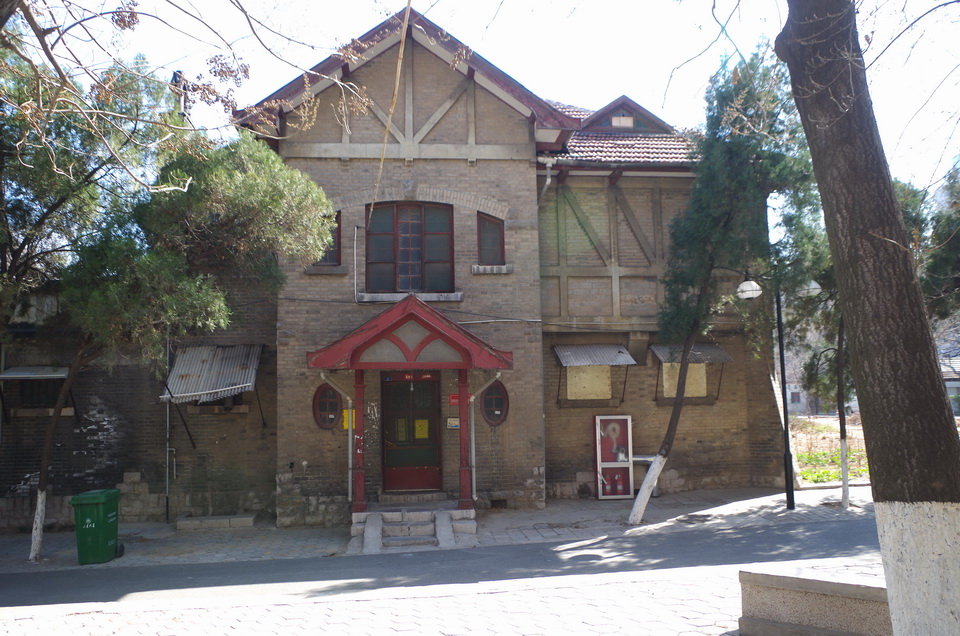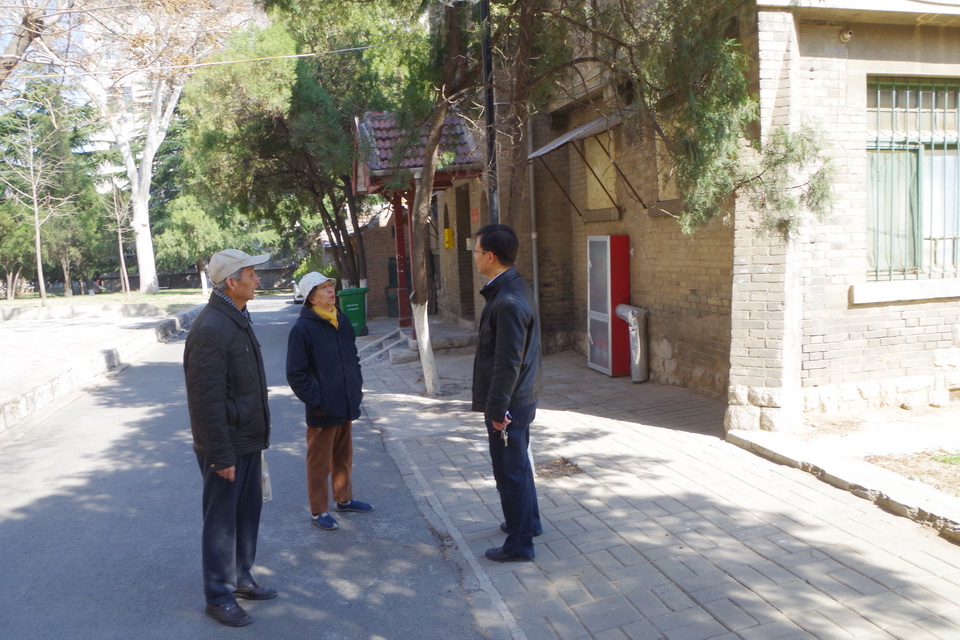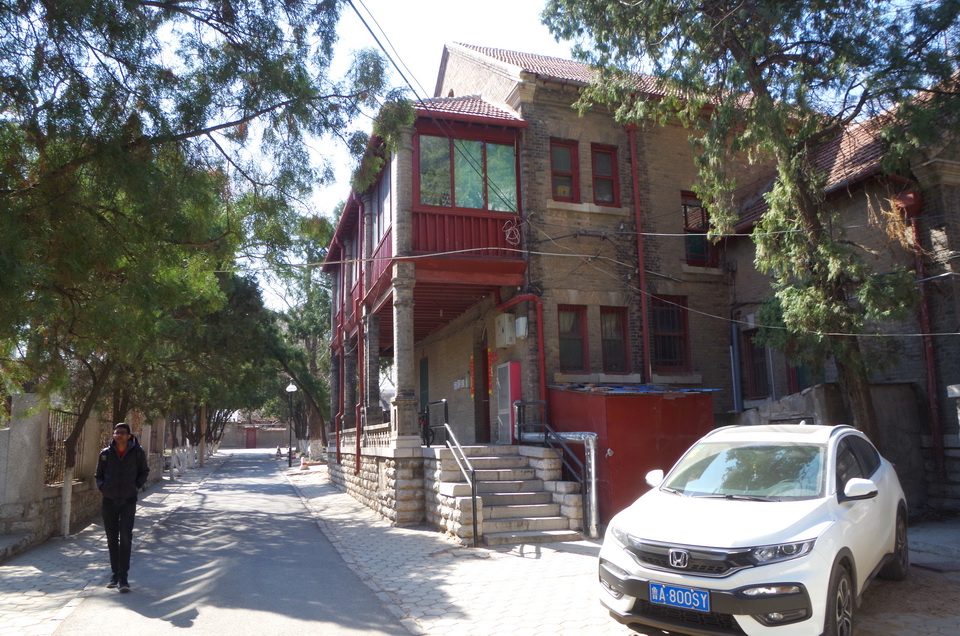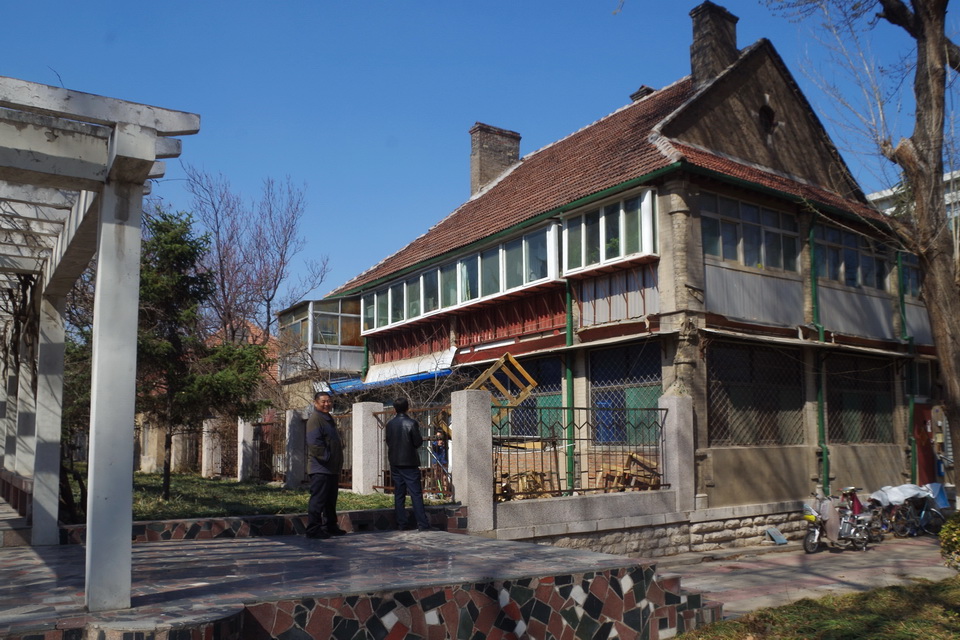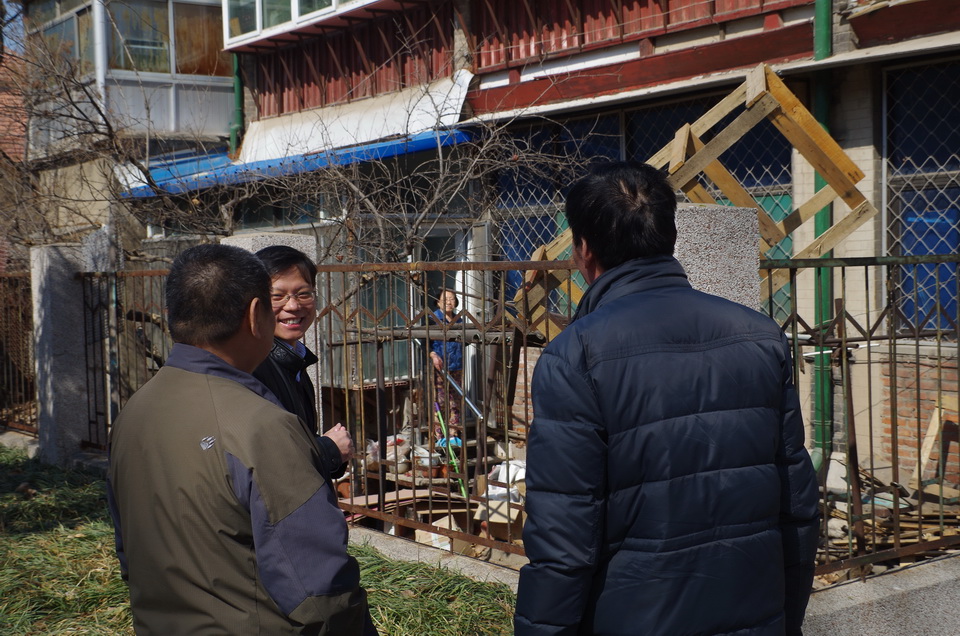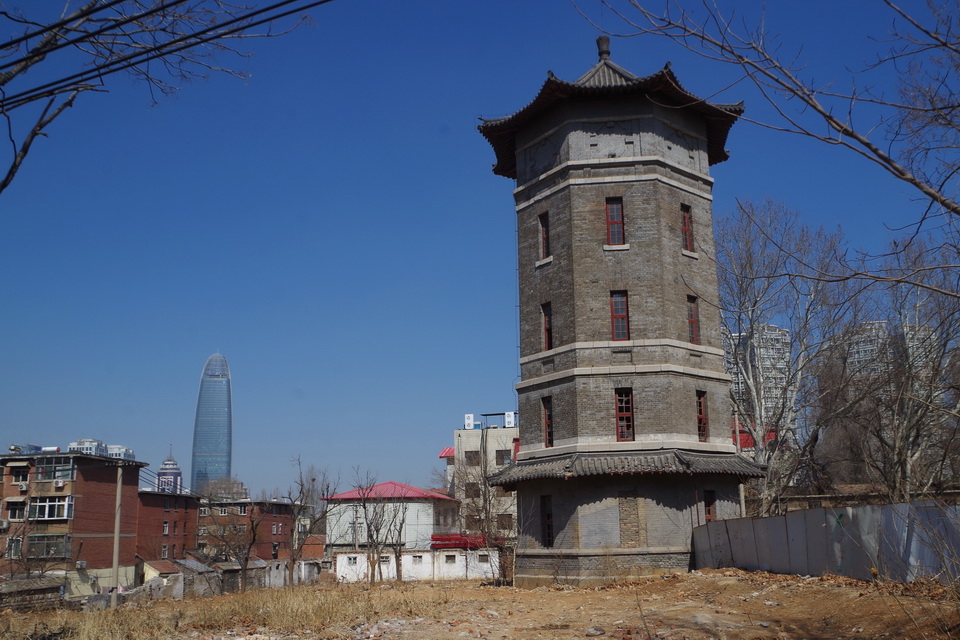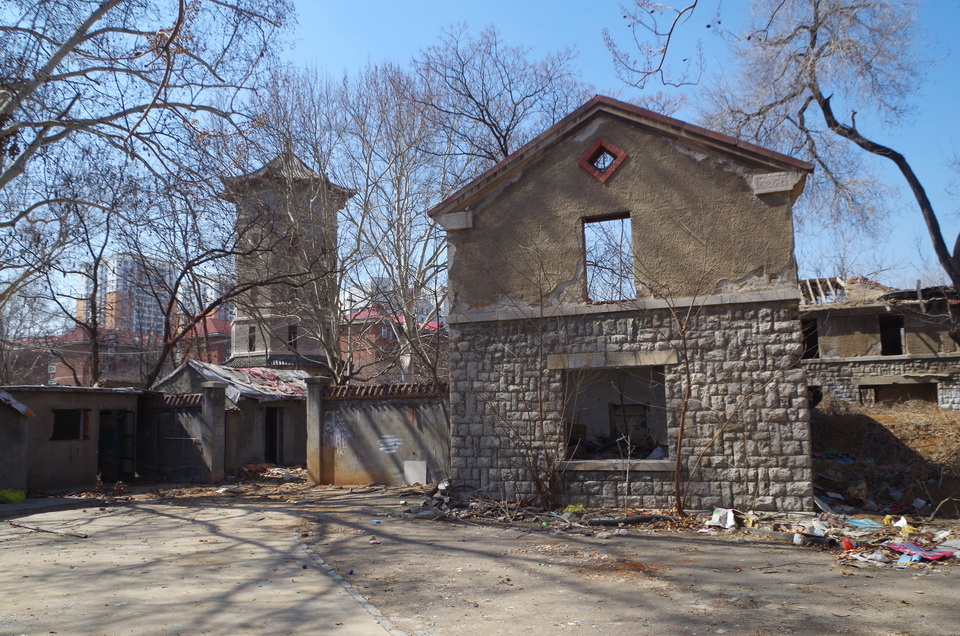Shandong University: Its Early Years
Click images below to enlarge.
Jinan is a sister city to Regina, my hometown in Saskatchewan, Canada. Jinan is also the home to visiting scholars who have studied and done research at our local university. While in Jinan (March 2016) a friends took me to visit some of the earliest buildings constructed on the grounds of present day Shandong University. It connects well with my many visits to sites of East-West historical interests.
A number of English names were given to the university established here in Jinan over the years including Cheeloo Christian University. It was formed in 1902 through the cooperation of British Baptists and American Presbyterians (missionary associations). But before emerging as Shandong University, it was also known as Shantung Protestant University (1909) and simply as Cheeloo University (1928).
In 1902, a cooperative venture by Western missionary societies relocated Tengchow College from Penglai (near Yantai on the north coast of the Shandong Peninsula) to what is now Weifang. A theological college (for training Chinese Christian leaders) was also expanded at that same time and located in Qingzhou (now part of Zibo), all in the province of Shandong (or Shantung, as written in earlier times).
These were significant steps in the development of Western-style education in Shandong and elsewhere in China. My current interest follows from an earlier discovery of the Weifang college site which was converted into a Japanese Concentration Camp for foreigners during the war years. (See my list of related posts below.)
To locate the site, I used a Wikipedia photo of an old entrance gate to Cheeloo University. My Jinan friend said he recognized it, knew its location, but confided he had no knowledge its history. We therefore set out with some common interest to see what we might find.
Located at No. 44, Wenhua West Road, the gate is in an area of Jinan known as Baotu Springs. Alighting from our taxi, I immediately shot some photos of the gate and surroundings. The date 1924 appears on the gate. This construction probably celebrated the expansion of the original Christian missions-related medical training facility with other institutions from Beijing, Nanjing and elsewhere (including the North China Union Medical College for Women). It was this expanded institution that became known as Cheeloo University School of Medicine. Today it is recognized as the original campus of the modern and prestigious Shandong University.
To the right of the gate we noticed an older building now overgrown by ivy. To my Western eyes, the design suggested a church or chapel, a common feature of all early Christian schools . It may have been the large assembly hall used for early morning chapels and Sunday services as well as for campus speakers and graduation exercises. When first built, it was probably located at the crossing of two roadways. Today, with doors and windows bricked-in, people will pass by with little understanding of its early importance. Yet, Jinan City has chosen to save this building from the wrecking ball.
Back of this building is a covered passageway leading to a row of houses. The shape of the gaps in the brickwork is not uncommon in China, but can easily suggest here the Christian “cross” symbol. The arched transverse walkway allowed entry from the side street into what would have been a courtyard at the front of row houses. The presumed chapel building here and related houses were clearly part of an important complex, all well-constructed of brick and masonry and all standing strongly to this day.
While there is no apparent use being made of the chapel building today, the row of residences behind the church appear to be occupied.
As we moved onward into the immediate area, we noted newer construction and recognized that we were, indeed, exploring an active campus of the Medical College. Across Wenhua Road we could view at least two huge hospital buildings. Understandably, medical training and medical practice coexist here in close proximity.
I have since learned that a major hospital was built here with foreign funds (starting in 1914 with completion in 1936). Fundraising, at this time, was led by Henry W. Luce, (father of the publishing magnate, Henry R Luce, of Time and Life magazines fame in America). Luce Sr. spent 31 years in China and was at one time vice-president of Cheeloo University. I have not yet confirmed whether those early medical buildings continue to exist today.
Earlier, I located the map which outlined plans for expansion of Cheeloo University. We were now somewhere on that site.
There was more to explore, so we moved on.
Our next stop was a large newer building of more recent Chinese design. A bust of a Westerner is mounted in the garden out front. I knew instantly it would be Dr. Bethune, the famous Canadian doctor who met up with Mao Zedong to help save lives during the struggle against the Japanese.
I have written about Bethune before, read his biographies, and know of his extraordinary passion for adopting new strategies both for the practice of medicine and for seeking social justice. Throughout China, his image is prominently displayed at hospitals and other medical facilities as a model of social and revolutionary commitment at much personal risk. His legendary stories have few equals in China. (See related articles below.) Some 50 years after the original founding of schools here, a medical school named after Norman Bethune did amalgamate with existing schools here, hence the reason for the statue.
Moving on we looked for more historic buildings. We found some that were clearly very old and some perhaps newer but still apparently predating the newest of the construction already referred to above.
One of the first older detached houses we spotted had the clear design of European half-timber construction. Noting an elderly couple approaching on the street, I asked my friend to engage them in conversation to see what we might learn.
We didn’t gather much insight this time. The couple appeared to be latecomers to the campus so could not fill us in on the history we sought.
As we continued our walk, we spotted more large houses, all of them constructed of two-stories with many chimneys, indicating the presence of Western-style fireplaces throughout the buildings. Most boasted verandas and balconies on their exteriors, but were in various stages of decay. Few showed any significant attempts to upgrade or renovate from the original construction. So, what I was viewing were well-used and somewhat broken-down houses from 100 years ago. For China, this is exceptional. Few buildings of such age exist in modern China, and certainly not in the heart of major cities. Clearly there has been a decision to preserve these buildings.
We continued along a walkway, shooting photos of each adjacent house. At the last house on the block, I spotted a woman standing outside in her back garden. I asked my friend to speak to her, asking what she knew of the history of these houses. She was forthcoming, and enjoyed chatting with us for some time. Soon, other passersby noticed our interest and joined the conversation as well. The woman claimed she was living in the oldest of the houses in this area. She boasted of its strong construction.
One of those stopping to chat seemed to be well-informed of the early history here. He pointed out that some buildings had recently been destroyed and a huge area just across the street was now ready for some new development. I also heard him speak of Penglai, and knew instantly he was aware of the much larger story that I had been uncovering myself in recent explorations here in Shandong.
The story of Western-style schooling development in Shandong Province started with a boys school in Penglai. An American Presbyterian missionary, Hunter Corbett, founded the school which later developed into Tengchow College under the leadership of Calvin W. Mateer. This school then moved to Weihsien (Weifang) where I first started to learn of this history. While the story is told more fully in some of my other writings, it is interesting to reflect on the commitment of these and many other Westerners who first chose to bring the practice and content of international education to Shandong Province.
Just before leaving the campus, we stumbled upon a huge tower. With gates open, we stepped inside briefly and recognized that it was very old. It may well have been used as a water tower. Walking on, we came upon some broken-down ruins of other buildings. Luckily, we met a local resident, engaged him in conversation, and learned that the University had been in the process of destroying these old buildings to make way for new construction when authorities stepped-in to stop the demolition.
Again, we were delighted to recognize that people were interested in the history of this place and were actively seeking to preserve these buildings. We departed with some satisfaction in what we had found today, but also with appreciation that authorities were preserving the history of this site.
MORE PHOTOS
A full set of photos from my visit can be found here:
Photo Album: Old Cheeloo University Site
RELATED BLOGS
This article is one of a series relating to my visits in 2013 and 2016:
-
- 1 –
Eric Liddell – Early Olympic Hero in China
-
- 2 –
Weifang (Shandong) – Historic School and Hospital
-
- 3 –
Weifang (Shandong) – Japanese Internment Camp
-
- 4 – Shandong University – Its Early Years (this article)
- 5 – History of Western Education in Shandong (under development)
On a different blogging site, I have also written something of the Early Life of Norman Bethune.
First published: 2017/03/13
Latest revision: 2023/04/19
